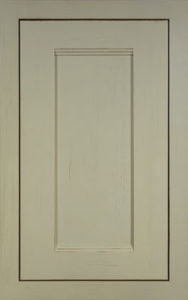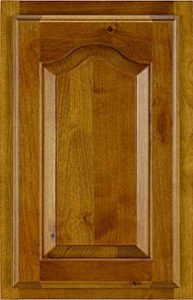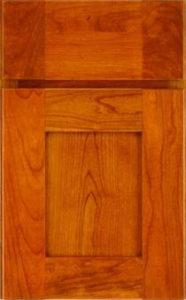This is the third in our series of posts about choosing kitchen cabinets. In today’s post we’ll be discussing the various types of cabinet doors. It’s an important topic because, when choosing new kitchen cabinets, homeowners often don’t give door types a great deal of thought because they don’t understand the difference between types.
What is Door “Type”?
Kitchen cabinet doors come in many colors, shapes and sizes, but there are only a few cabinet door types. “Type” is a classification used to describe how the door fits onto the cabinet box. The three most common types of cabinet doors are inset, standard overlay (also called partial overlay or traditional overlay) and full overlay.
Inset
Inset cabinet doors fit inside the face frame of the cabinet. The surfaces of the doors are flush with the surface of the frame. The hinges for this type of door are usually mounted on the face frame and are often visible when the door is closed. Inset doors provide a very elegant, traditional look, but can be more expensive than other types of kitchen cabinet doors because of the precision required.

Standard Overlay
Standard overlay cabinet doors are the most common type of kitchen cabinet door. These types of doors are mounted over the face of the cabinet, covering the opening completely and partially covering the finished face frame. “Overlay” is the term used to describe the amount of the face frame that is covered by the cabinet door. The part of the frame that remains visible is referred to as the “reveal”.

Full Overlay
Full overlay doors (often called “European-style” doors) cover the opening and the entire face of the box. There is a minimal amount of space between the doors, usually less than 1/8”. Full overlay doors sit on the outside of the cabinet box, giving you the maximum amount of space for storage. Full overlay doors are generally found on frameless cabinets, but they can be used on framed cabinets as well. Hinges are concealed with this type of door and door knobs or pulls are needed to open the door.

Once you’ve decided on a door type, it’s time to choose a door style. And we’ll discuss that in our next post.
Next time: Choosing Kitchen Cabinets Part 4 – Door Styles
Nice Blog, love your tips and suggestions. Kitchen Cabinets are actually the main ingredient in your kitchen if they don’t standout then you kitchen is definitely lacking something.
Nice Blog, Very informative, I think Kitchen Cabinet
looks more beautiful in white & cream color.
Hey very informative, i am also thinking to renovate my kitchen with beautiful Kitchen Cabinet.